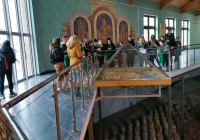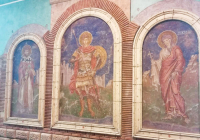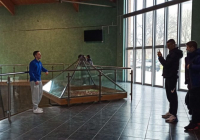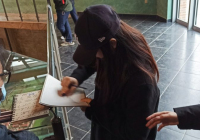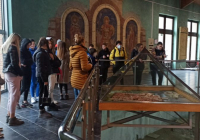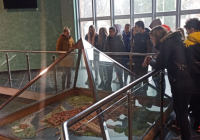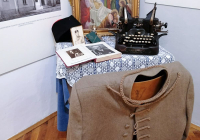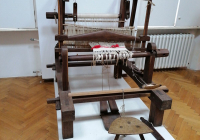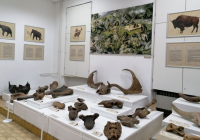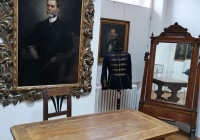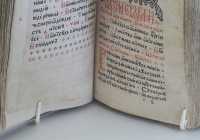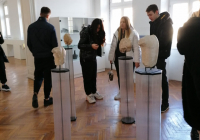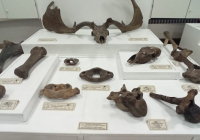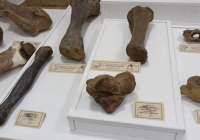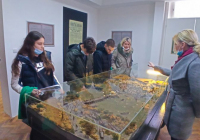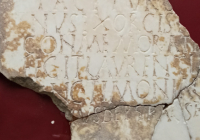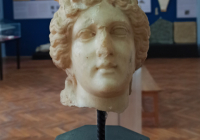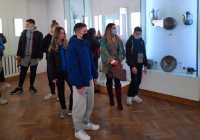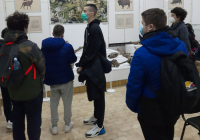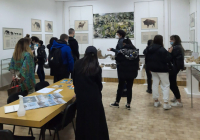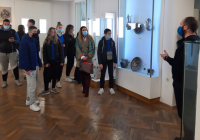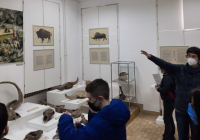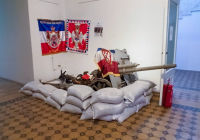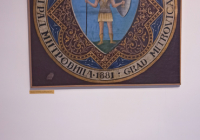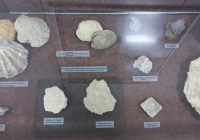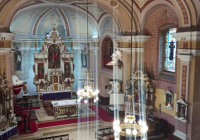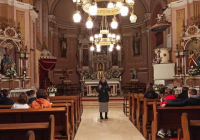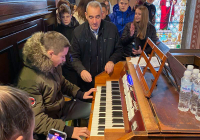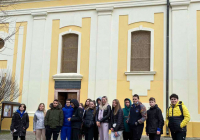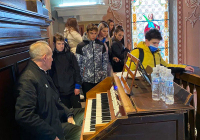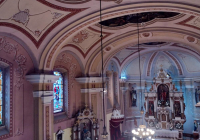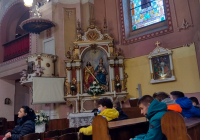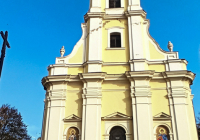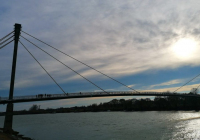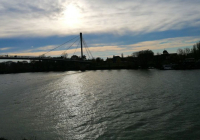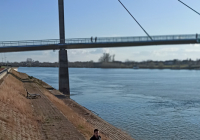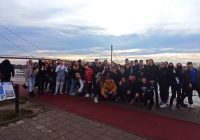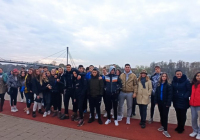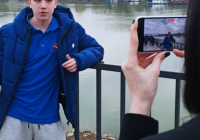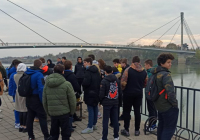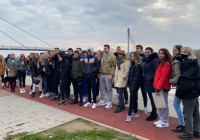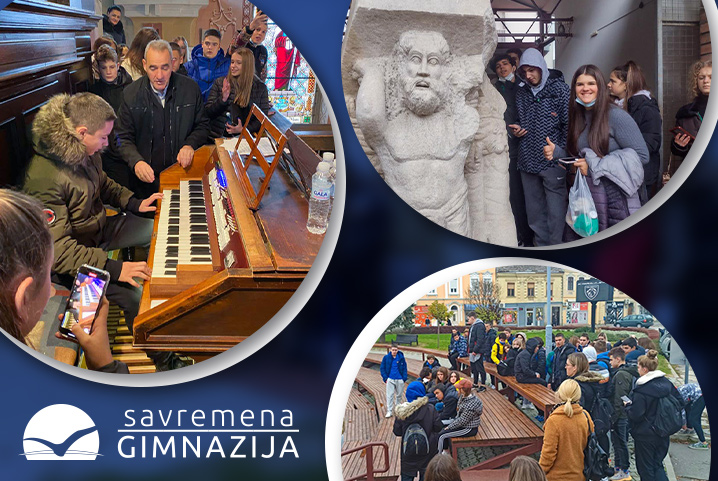
Savremena Gimnazija implements contemporary teaching methods that sets it apart from other schools.
Thus, by the end of November, environmental tuition was successfully organised for the students in Years 1 and 2 of Savremena Gimnazija. This model of education allows students, who are taken out of their classrooms, to engage in tasks designed by their subject teachers while being on field trip.
The environmental tuition was created by the subject teachers of history, Latin, arts, religious education, ICT as well as the elective subject teachers (Language, media and culture, and Arts, design and an individual). The programme was carried out in Sremska Mitrovica, at the following sites:
IMPERIAL PALACE
Roman imperial palaces had two parts: official and residential. The former was the area for carrying out official duties, while the latter was the part where the emperor and his family lived.
At this historic site today you can see only a part of the imperial palace complex. The walls and floors which can be seen belong mostly to the residential part of the palace. The luxurious interior decorations are still visible as there are fragments of frescoes, mosaic floors, architectural decorations made of versatile stones, brought from different parts of the world: Egypt, Asia Minor, Greece, Italy.
THE MUSEUM OF SREM
In the natural history section of the Museum of Srem, the students could learn about palaeontological artefacts that provide information on the forms of life for the very distant past of Srem, offering evidence of the fauna which used to live in the valley of Srem so long ago.
The historical section of the Museum of Srem preserves objects created in the course of a long period of the past, from the 11th century to the end of 1960. Our students could see the collections of weapons and military equipment, medals, seals, uniforms, numismatic collection, newspapers and periodicals, photographs and film tapes, cadastral plans, cultural history documents, postcards, advertisements, the documents and photographs of the World War II period and other small uncategorized items.
In the Museum of Srem Lapidarium our students could see a marble sundial where Atlas, the Titan and Hercules, the hero were depicted. The students also found there various forms of gravestones (grave stelae, sarcophagi, grave altars, inscriptions, early Christian tombstones), votive altars - the altars from a beneficiary section outside the western ramparts of Sirmium), milestones as well as numerous architectural elements that in a special way decorated one imperial city while using various stone materials brought from all over the Roman empire.
THE ORTHODOX AND ROMAN-CATHOLIC CHURCHES OF SAINT DEMETRIUS
Both churches are devoted to St Demetrius, the patron of the city. The orthodox church of St Demetrius is also known among the local people as the New Orthodox church or the Congregation church, and represents the biggest orthodox temple in Sremska Mitrovica and one of the most important ones in the region of Srem.
The students were required to sport the similarities and differences between the styles the two churches belong to, to compare their spaces, worship services, rituals, faith concepts, clergy and other different elements they could see.
GRAIN MARKET SQUARE AND ST IRINEJ BRIDGE
These two locations were also the last we visited as a part of our environmental tuition.
The square in Sremska Mitrovica and its immediate vicinity is one of the oldest parts of the city and it has been protected as the ambient cultural-historical unit of exceptional importance. It was built in the 17th century and has the features of Turkish city planning model - the triangular shape, uneven sides and gradual entrance into the streets that merge into the square at an angle.
The bridge across the Sava designed by our academician Nikola Hajdin, with its 262.5 m is the longest suspended pedestrian bridge in Europe, and connects Sremska Mitrovica and Mačvanska Mitrovica. It was named after St Irinej, one of the martyrs from the Roman times of Sirmium, who was executed being thrown from the then bridge of Artemis. Besides writing the articles on the field trips in Sremska Mitrovica, our students contributed to Google Maps from all the sites - they created a Guidebook through Sirmium with brief descriptions and photos, designed social media network posts, made the panoramic view of the site, drew and tried to add the missing parts of the palace which used to be. The students were also invited to answer the questions about the things they had seen and listened to, but also some questions that required additional search on the internet.

